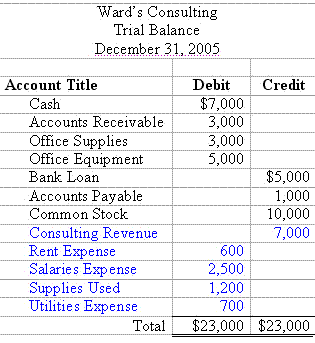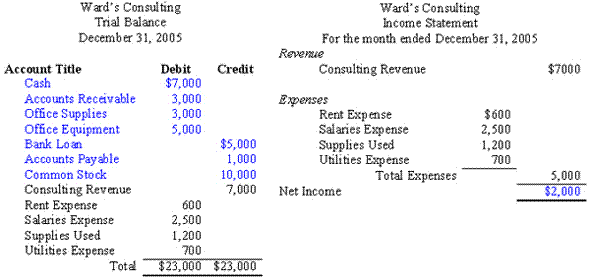General Purpose Financial Statements
Describe general purpose financial statements
Financial Statements
Definition:
Financial statements are a collection of reports about an
organization’s financial results, financial condition, and cash flows.
They are useful for the following reasons:
Financial statements are a collection of reports about an
organization’s financial results, financial condition, and cash flows.
They are useful for the following reasons:
- To determine the ability of a business to generate cash, and the sources and uses of that cash.
- To determine whether a business has the capability to pay back its debts.
- To track financial results on a trend line to spot any looming profitability issues.
- To derive financial ratios from the statements that can indicate the condition of the business.
- To investigate the details of certain business transactions, as outlined in the disclosures that accompany the statements.
The standard contents of a set of financial statements are:
- Balance sheet.
Shows the entity’s assets, liabilities, and stockholders’equity as of
the report date. It does not show information that covers a span of
time. - Income statement. Shows the results of the
entity’s operations and financial activities for the reporting period.
It includes revenues, expenses, gains, and losses. - Statement of cash flows. Shows changes in the entity’s cash flows during the reporting period.
- Supplementary notes.
Includes explanations of various activities, additional detail on some
accounts, and other items as mandated by the applicable accounting
framework, such asGAAP or IFRS.
Why General Purpose Financial Statements must follow Generally Accepted Accounting Principles
Explain why general purpose financial statements must follow generally accepted accounting principles
If
a business plans to issue financial statements to outside users (such
as investors or lenders), the financial statements should be formatted
in accordance with one of the major accounting frameworks. These
frameworks allow for some leeway in how financial statements can be
structured, so statements issued by different firms even in the same
industry are likely to have somewhat different appearances.
a business plans to issue financial statements to outside users (such
as investors or lenders), the financial statements should be formatted
in accordance with one of the major accounting frameworks. These
frameworks allow for some leeway in how financial statements can be
structured, so statements issued by different firms even in the same
industry are likely to have somewhat different appearances.
If
financial statements are issued strictly for internal use, there are no
guidelines, other than common usage, for how the statements are to be
presented.
financial statements are issued strictly for internal use, there are no
guidelines, other than common usage, for how the statements are to be
presented.
At
the most minimal level, a business is expected to issue an income
statement and balance sheet to document its monthly results and ending
financial condition. The full set of financial statements is expected
when a business is reporting the results for a full fiscal year, or when
a publicly-held business is reporting the results of its fiscal
quarters.
the most minimal level, a business is expected to issue an income
statement and balance sheet to document its monthly results and ending
financial condition. The full set of financial statements is expected
when a business is reporting the results for a full fiscal year, or when
a publicly-held business is reporting the results of its fiscal
quarters.
Example Trial Balance:

The
trial balance ensures that the debits equal the credits.It is important
to note that just because the trial balance balances, does not mean
that the accounts are correct or that mistakes did not occur.There might
have been transactions missed or items entered in the wrong account –
for example increasing the wrong asset account when a purchase is made
or the wrong expense account when a payment is made.Another potential
error is that a transaction was entered twice.Nevertheless, once the
trial balance is prepared and the debits and credits balance, the next
step is to prepare the financial statements.
trial balance ensures that the debits equal the credits.It is important
to note that just because the trial balance balances, does not mean
that the accounts are correct or that mistakes did not occur.There might
have been transactions missed or items entered in the wrong account –
for example increasing the wrong asset account when a purchase is made
or the wrong expense account when a payment is made.Another potential
error is that a transaction was entered twice.Nevertheless, once the
trial balance is prepared and the debits and credits balance, the next
step is to prepare the financial statements.
Income Statement
Describe an income statement
The
income statement is prepared using the revenue and expense accounts
from the trial balance.If an income statement is prepared before an
entity’s year-end or before adjusting entries (discussed in future
lessons) it is called an interim income statement.The income statement
needs to be prepared before the balance sheet because the net income
amount is needed in order to fill-out the equity section of the balance
sheet.The net income relates to the increase (or in the case of a net
loss, the decrease) in owner’s equity.
income statement is prepared using the revenue and expense accounts
from the trial balance.If an income statement is prepared before an
entity’s year-end or before adjusting entries (discussed in future
lessons) it is called an interim income statement.The income statement
needs to be prepared before the balance sheet because the net income
amount is needed in order to fill-out the equity section of the balance
sheet.The net income relates to the increase (or in the case of a net
loss, the decrease) in owner’s equity.

Preparation of a Balance Sheet
Prepare a balance sheet
Now
that the net income for the period has been calculated, the balance
sheet can be prepared using the asset and liability accounts and by
including the net income with the other equity accounts.
that the net income for the period has been calculated, the balance
sheet can be prepared using the asset and liability accounts and by
including the net income with the other equity accounts.

When
preparing balance sheets there are two formats you can use.The format
above is called the Report form and the Account form lists assets on the
left side and liabilities and equity on the right side.
preparing balance sheets there are two formats you can use.The format
above is called the Report form and the Account form lists assets on the
left side and liabilities and equity on the right side.

























































